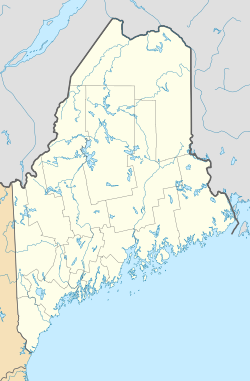Kent Burying Ground | |
 | |
| Location | NE corner of Fayette Corner Rd. and Oak Hill Rd., Fayette, Maine |
|---|---|
| Coordinates | 44°25′12″N70°04′18″W / 44.42013°N 70.07153°W |
| Area | 0.4 acres (0.16 ha) |
| Built | 1880 |
| Architect | Kent, Elias H. |
| NRHP reference No. | 08001254 [1] |
| Added to NRHP | December 31, 2008 |
Kent Burying Ground is a historic cemetery at the corner of Fayette Corner Road and Oak Hill Road in Fayette, Maine. Established in 1880 by Elias Kent, it is unusual for its layout of concentric rings around a central monument, only known in one other cemetery in the state, the Wing Family Cemetery in nearby Wayne. The cemetery was listed on the National Register of Historic Places in 2008. [1]

